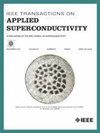Optimization of Hemolytic Performance for Blood Pump Based on Temperature Field Analysis and Three Control Strategies
IF 1.7
3区 物理与天体物理
Q3 ENGINEERING, ELECTRICAL & ELECTRONIC
引用次数: 0
Abstract
Blood pumps are the most important medical devices for treating heart failure. Haemolysis is an important factor affecting the performance of blood pumps. Excessive temperatures can damage red blood cells, thereby reducing blood compatibility. To solve the problem of haemolysis caused by temperature increase in an electromagnetic suspended blood pump, the influence of temperature increase in an electromagnetic suspended blood pump motor was studied. First, an electromagnetic levitation blood pump model and a mathematical model of the temperature field were established. Subsequently, the influences of two key factors (stator winding phase resistance and blood pump speed) on the overall temperature increase of the electromagnetic levitation blood pump were explored. Finally, based on the law of temperature increase, a temperature optimisation scheme for the motor of an electromagnetic levitation blood pump was proposed. The results show that, on the one hand, the temperature rise of the electromagnetic levitation blood pump can be effectively reduced by properly reducing the stator winding phase resistance and rotating speed. Conversely, optimising commutation and controllers can further reduce the temperature rise. This method can be used as a guide for the optimal design of blood pumps.基于温度场分析和三种控制策略优化血泵的溶血性能
血泵是治疗心力衰竭最重要的医疗设备。溶血是影响血泵性能的一个重要因素。过高的温度会损坏红细胞,从而降低血液的相容性。为了解决电磁悬浮血泵温度升高引起溶血的问题,研究了电磁悬浮血泵电机温度升高的影响。首先,建立了电磁悬浮血泵模型和温度场数学模型。随后,探讨了两个关键因素(定子绕组相位电阻和血泵转速)对电磁悬浮血泵整体温升的影响。最后,根据温升规律,提出了电磁悬浮血泵电机的温度优化方案。结果表明,一方面,通过适当降低定子绕组相位电阻和转速,可以有效降低电磁悬浮血泵的温升。相反,优化换向和控制器可进一步降低温升。这种方法可作为血泵优化设计的指导。
本文章由计算机程序翻译,如有差异,请以英文原文为准。
求助全文
约1分钟内获得全文
求助全文
来源期刊

IEEE Transactions on Applied Superconductivity
工程技术-工程:电子与电气
CiteScore
3.50
自引率
33.30%
发文量
650
审稿时长
2.3 months
期刊介绍:
IEEE Transactions on Applied Superconductivity (TAS) contains articles on the applications of superconductivity and other relevant technology. Electronic applications include analog and digital circuits employing thin films and active devices such as Josephson junctions. Large scale applications include magnets for power applications such as motors and generators, for magnetic resonance, for accelerators, and cable applications such as power transmission.
 求助内容:
求助内容: 应助结果提醒方式:
应助结果提醒方式:


